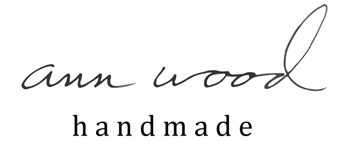There is a little room at each end of the new place. The back room was the first project, a place for painting and drawing mostly. The room at the other end, the front of the building, is for sewing and shipping orders. It’s currently about half way painted and somewhat furnished…
That’s the elephant part. The saying goes:
How do you eat an elephant? One bite at a time.
I’ve been getting things done here a little bit at a time. The pace is slow but steady and completing each little task builds momentum and helps me feel less overwhelmed by all there is to do. I’d love to show you what I’ve got so far in the sewing/shipping room, I’m super pleased with it and putting it together has been generating lots of new ideas.

Remember the pink painting table from the old place? That’s a sewing machine table now. A bunch of little projects are hanging on the wall above it. Hanging the fish and chickens and cats etc inspired idea’s for more sweet and simple shapes to sew. Groups of things you could hang together or make garlands with. I love the idea of odd, sort of random groupings and maybe others with a story to tell. I’m working on some now and I’ll share the patterns soon. It’s easy to hang them, Just a stitch of embroidery thread across the back and a little nail or tack in the wall. So many possibilities. The wall makes me happy.


You might also recall the damaged cedar chest that was repurposed as a container garden. I got it for pretty much free at a flea market. The top has made an excellent chalkboard.

You can’t have too many chalkboards. The paint is just flat black craft paint and so far so good. If it doesn’t hold up I’ll spring for real chalkboard paint.

There is more to come, shelves and some sort of super cozy daybed situation for sewing and visiting dignitaries but the essentials are in place and I’m looking forward to lots of hours in this sunny little room making stuff. There are one million ideas percolating at the moment. All sorts of patterns and maybe some mushrooms and other little things for gifts and maybe the shop this holiday season.
Have you started sewing holiday stuff? I’m determined to be done before December.
onward,
ann

 PS Did you know October 15th is international Mushroom Day? It’s a real thing, I had no idea.
PS Did you know October 15th is international Mushroom Day? It’s a real thing, I had no idea.
PPS – It is officially soup season and this is a great one. I consider it my civic duty to remind you of it each autumn. Have you got a favorite fall soup? I’m always on the look out.
























































































































